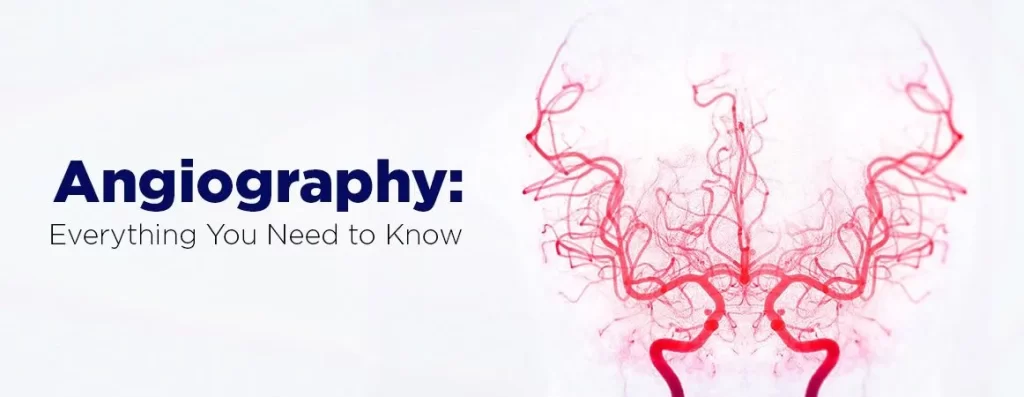Angiography: Everything You Need to Know
What is Angiography?
Angiography is an imaging test that uses a contrast dye, typically injected into the blood vessels, to produce detailed X-ray images. It helps doctors detect irregularities like blockages or weaknesses in blood vessels, which can lead to conditions like heart disease, stroke, or pulmonary embolism. In some cases, angiography is combined with a procedure called angioplasty, which can open narrowed or blocked arteries, enhancing blood flow.
Types of Angiography
There are several types of angiography used to examine different parts of the circulatory system:
- Coronary Angiography: This focuses on the coronary arteries, which supply blood to the heart. Coronary angiography helps detect blockages or narrowing of these arteries, which could lead to heart attacks or other cardiovascular conditions.
- CT Angiography (Computed Tomography): CT angiography combines traditional X-ray techniques with computed tomography to create detailed, cross-sectional images of blood vessels. It is non-invasive and can be used to assess blood vessels in various parts of the body, including the heart, brain, and lungs.
- Pulmonary Angiography: This test examines the blood vessels in the lungs, primarily to detect pulmonary embolism—a potentially life-threatening blockage in the lung arteries.
- MRI Angiography (Magnetic Resonance Imaging): MRI angiography uses magnetic fields instead of X-rays, making it a non-invasive and radiation-free option. It is commonly used to look at blood vessels in the brain and neck and can provide high-resolution images without requiring contrast dye.
Each type of angiography has unique advantages and specific uses depending on the area of concern and the patient’s overall health.
How Angiography is Done
Understanding how angiography is done helps patients know what to expect. The process involves several steps:
- Preparation: The patient may be asked to avoid eating or drinking for a few hours before the procedure. To help the patient relax, a small amount of sedative may be administered.
- Injection of Contrast Dye: The doctor inserts a catheter into a blood vessel, usually in the groin or arm, and guides it to the area being examined. A contrast dye is then injected through the catheter, which helps highlight the blood vessels on the X-ray images.
- Imaging: X-rays or CT scans capture images of the blood vessels as the dye flows through them, showing any abnormalities, such as blockages or narrowing.
- Completion: Once the images are obtained, the catheter is removed, and the entry site is bandaged. Most patients are monitored for a few hours to ensure there are no complications from the procedure.
How angiography is done depends on the type—coronary angiography typically requires a catheter in the groin, while CT angiography uses non-invasive scanning techniques.
Coronary Angiography and Angioplasty
Coronary angiography is often paired with angioplasty, a procedure that opens narrowed or blocked arteries. If a blockage is detected during the angiography, the doctor may perform an angioplasty on the spot.
This involves inflating a small balloon at the blockage site to open the artery, and in some cases, inserting a stent to keep the artery open. Angiography and angioplasty are often performed together to diagnose and treat cardiovascular issues efficiently.
Pulmonary Angiography
Pulmonary angiography focuses on the lungs’ blood vessels. It is often ordered to check for pulmonary embolisms—blood clots that block lung arteries, which can cause shortness of breath and chest pain. Pulmonary angiography allows doctors to pinpoint the location and size of the clot, guiding effective treatment.
MRI Angiography and CT Angiography
Both MRI angiography and CT angiography provide non-invasive alternatives to traditional angiography. MRI angiography is ideal for patients who cannot tolerate contrast dye or who prefer a procedure without radiation exposure. It is frequently used for brain and neck blood vessels, providing high-resolution images.
CT angiography uses X-ray technology combined with CT scanning to provide a detailed view of blood vessels in various parts of the body. Both methods allow for detailed vascular imaging without the need for catheter insertion, making them less invasive options.
Risks and Considerations
Despite its relative safety, angiography carries some risks. The procedure can occasionally lead to bleeding, infection, or damage at the catheter insertion site. The contrast dye may potentially cause an allergic reaction in some people. For patients with kidney problems, the dye can sometimes cause kidney issues, so doctors typically assess kidney function before the procedure.
Conclusion
Angiography is a crucial diagnostic tool for detecting vascular conditions in various parts of the body, from coronary arteries to pulmonary vessels. Knowing what is angiography, the different types of angiography—including coronary angiography, CT angiography, pulmonary angiography, and MRI angiography—and how angiography is done can help patients make informed choices. Whether it’s combined with angioplasty for treatment or used alone for diagnosis, angiography plays a vital role in modern medicine.
Post Disclaimer
The information contained in this post is for general information purposes only. The information is provided by "Angiography: Everything You Need to Know "and while we endeavour to keep the information up to date.
Legal Disclaimer
We do not claim to cure any disease which is considered’ incurable ‘ on the basis of scientific facts by modern medicine .The website’s content is not a substitute for direct, personal, professional medical care and diagnosis. None of the medicines mentioned in the posts ,including services mentioned at "medicineguide.us" should be used without clearance from your physician or health care provider.
Testimonials Disclaimer– : Results may vary, and testimonials are not claimed to represent typical results. The testimonials are real, and these patients have been treated with homeopathy treatment from our clinic . However, these results are meant as a showcase of what the best, Medicine can do with their disease contions and should not be taken as average or typical results.


